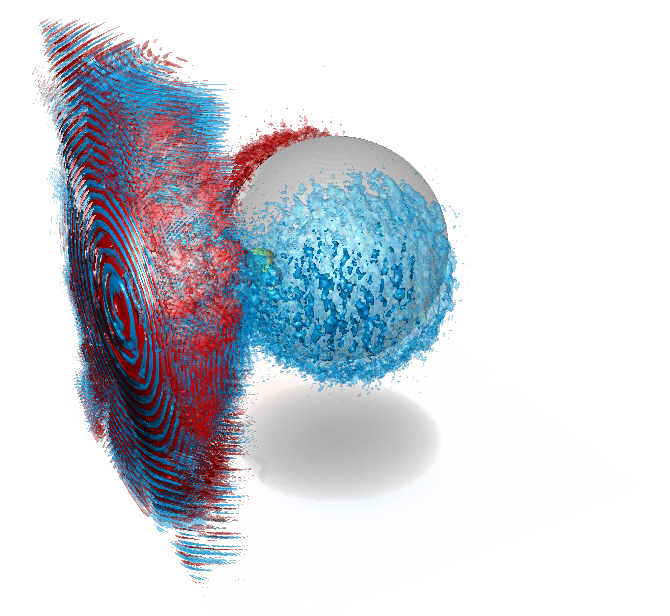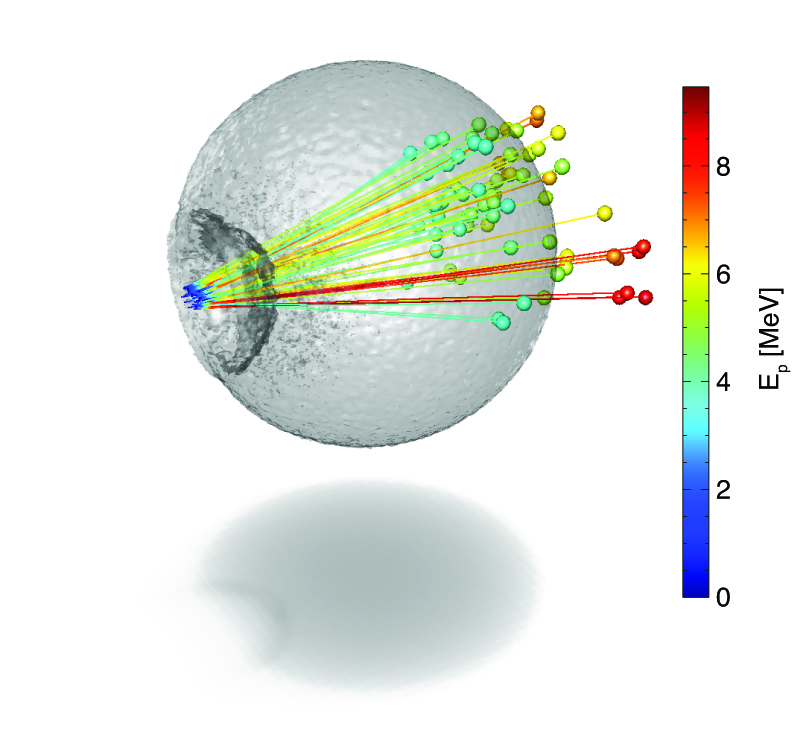Intense lasers for shock acceleration of ions
Ions are already successfully used for cancer treatment, but for that, big and costly facilities are necessary to accelerate them to energies up to 250 MeV per nucleon. Strong effort is done recently in developing a size and cost-reduced laser-based acceleration scheme that can be brought into practice.
The challenge now is to optimize the acceleration scheme to increase the ion energy while having a sufficient number of accelerated particles. The interchange between experiment and simulations is essential at this stage to find the best setting. 2D simulations overestimate the efficiency, thus it is necessary to perform 3D simulations in order to make quantitative statements.

Fig. 1: The laser field shown in red/blue cannot penetrate the target and is reflected at the front surface. The expanding electrons create an additional TNSA field around the spherical target.
In the shock acceleration scheme, the plasma target is so dense that the laser cannot penetrate (Fig. 1), but the electrons are heated and leave the target. The heavier ions are not affected by the laser and stay behind. This leads to a strong space-charge electric field – the shock field – which is moving through the plasma target and picking up the ions. With a kick they are pushed and can be accelerated to several 10s or 100s of MeV (Fig. 2).

Fig. 2: Selection of accelerated protons.








